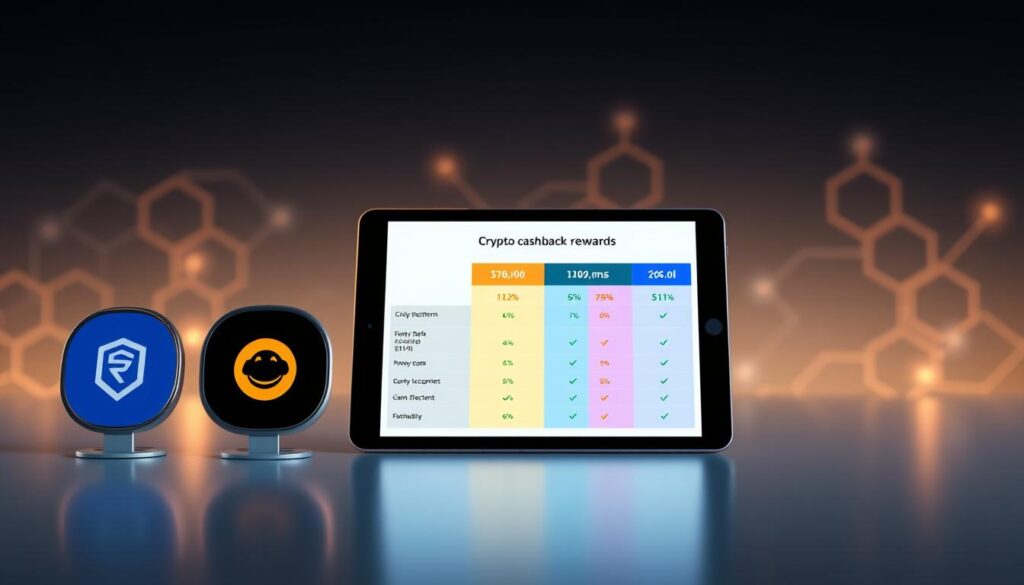Now Reading: Maximize Your Wealth with Long-term Crypto Investments
- 01
Maximize Your Wealth with Long-term Crypto Investments
Maximize Your Wealth with Long-term Crypto Investments

Crypto markets reward those who stay patient. Long-term crypto investments focus on growth over years, not days. Short-term traders chase daily price swings, but history shows holding top assets like Bitcoin for a decade delivers higher returns. The key is compounding returns while managing risks through disciplined strategies.
Data proves the advantage of holding. Bitcoin’s price rose from under $1,000 in 2013 to over $68,000 by 2021—a 6,800% gain for long-term holders. This contrasts sharply with trying to time short-term moves, which often leads to losses from market volatility.
Key Takeaways
- Long-term crypto investments prioritize asset appreciation over short-term gains.
- Compounding amplifies returns when held through market cycles.
- Historical data shows major cryptocurrencies grow exponentially over decades.
- Risk management reduces emotional decisions during price drops.
- Patience trumps frequent trading in building sustainable crypto wealth.
Understanding the Power of Long-term Crypto Investments
Long-term crypto investments need patience and a smart plan. They focus on the big picture, not quick gains. Time, growth, and history show their strength.
Why Time in the Market Beats Timing the Market
- Bitcoin’s 2017 peak saw many miss gains by exiting during dips.
- Research shows holding Bitcoin for five+ years outperforms 70% of active traders.
- Market volatility rewards investors who ignore short-term noise.
The Compounding Effect in Cryptocurrency Markets
A $10,000 investment in Bitcoin in 2015 grew to over $1.5 million by 2021. This is thanks to reinvested gains. Compounding boosts returns over time.
Historical Performance of Long-term Holders
Early Bitcoin adopters since 2013 saw returns over 100,000%. Ethereum buyers at $1 in 2016 gained 10,000% by 2021. These stories prove the value of holding crypto long-term.
The Psychological Mindset Required for Crypto HODL Strategy
Successful hodl cryptocurrency strategies need mental discipline as much as market knowledge. The long-term hodl method requires patience, but emotions like fear and greed can get in the way. Most investors find it hard to ignore short-term price changes, leading to bad choices.
Key biases to overcome include:
- FOMO: Panic selling during dips or impulsive buys during rallies
- Loss aversion: Holding onto losing assets longer than makes sense
- Recency bias: Giving too much weight to recent trends
Building mental toughness begins with keeping a journal. Track daily price changes and emotional responses to spot patterns. Forums like r/CryptoCurrency or DAOs offer support during tough times. History shows that staying calm during downturns can lead to big gains.
Set goals that aren’t just about money. Focus on blockchain adoption rates instead of daily prices. Use reminders to check your investment goals weekly. Celebrate achievements like network growth or protocol updates, not just price changes. This helps ignore market noise.
Experts like MicroStrategy’s Michael Saylor view crypto as infrastructure, not just speculation. Their long-term hodl strategy focuses on project fundamentals, not just prices. This approach is something individual investors can follow.
Fundamentals of Building a Sustainable Crypto Portfolio
Successful crypto investment needs crypto portfolio diversification and crypto investment planning. Begin by matching your strategy with your goals and how much risk you can take. Asset allocation helps decide how to split funds among different crypto types.
- Core Assets: Keep 50–70% for well-established projects like Bitcoin and Ethereum.
- Growth Plays: Put 20–30% in mid-cap coins with active development (e.g., Solana, Polkadot).
- Speculative Bets: Limit experimental tokens to 5–10% of your total.
Evaluate risk-to-reward by looking at:
- Market capitalization rankings
- Developer activity on platforms like Etherscan
- Use-case adoption metrics

A cautious investor might put 60% in Bitcoin/Ethereum, 30% in stablecoins like USDT, and 10% in DeFi protocols. Bold traders could invest 40% in layer-2 solutions while keeping core assets.
Regularly rebalance to stay on track with changing goals. Learn more about allocation frameworks in this guide.
Don’t put too much in volatile areas. A 10% limit on untested projects safeguards your money while allowing for new ideas.
Market Cycles and Their Impact on Long-term Investment Returns
Cryptocurrency investment strategies must account for market cycles to maximize returns. Recognizing phases like bull and bear markets helps investors align actions with market conditions, ensuring growth over time. How to invest in crypto long-term successfully involves adapting to these cycles without losing sight of long-term goals.
Identifying bull and bear market phases starts with tracking technical indicators like moving averages and relative strength index (RSI). On-chain metrics, such as transaction volumes and network hash rates, reveal hidden trends. Bull markets often show rising prices and increasing adoption, while bear markets feature prolonged declines and reduced trading activity.
Strategies for Each Market Cycle
- Bull markets: Hold core holdings but rebalance to avoid overexposure to volatile assets.
- Bear markets: Use dips to accumulate undervalued projects with strong fundamentals.
- Transition phases: Use stop-loss orders to protect gains without panicking.
Using Dollar-Cost Averaging During Market Volatility
Systematic investing via dollar-cost averaging (DCA) reduces timing risk. By investing fixed amounts monthly, investors buy more coins when prices drop and fewer when prices rise. Historical data shows DCA outperformed lump-sum investments during the 2017–2019 cycle, smoothing returns over time.
Market cycles are inevitable, but disciplined investors turn volatility into opportunities. Aligning strategies with phases and maintaining consistency ensures steady progress toward long-term goals.
Researching Cryptocurrencies with Strong Long-term Potential
To plan your crypto investments well, you need to do thorough research. Look for coins with new technology and big potential for growth. Make sure the team behind the coin is experienced and has a clear plan.
- Assess problem-solution fit: Does the project address a real-world need?
- Study tokenomics: Examine supply mechanisms, incentives, and how value accrues over time.
- Track development activity: Regular code commits and roadmap progress indicate project viability.
White papers and GitHub activity show a coin’s technical strength. Compare it to others in the market. Also, watch how people talk about it online to see if it’s gaining traction.
Don’t get caught up in just the hype. Focus on the coin’s real value, like its technology and how it makes money. Keep an eye on updates and changes in the market. This helps you stay on track with your long-term plans.
Technical Analysis Tools for Long-term Crypto Investors
Long-term crypto investors use technical analysis tools to manage the market without daily worries. These tools help spot important trends and ignore short-term changes.
Key Indicators for Identifying Long-term Trends
Look for metrics that show long-term patterns. The 200-day moving average marks bull and bear phases. Logarithmic growth curves show when prices grow fast.
Market cycle support bands, like Bitcoin’s past resistance levels, signal big trend changes. Tools like TradingView make it easy to follow these trends.
Reading Charts from a Macro Perspective
- Use 5–10 year charts to find areas where big investors buy
- Apply logarithmic scales to see true price growth
- Track RSI(14) over long periods to find buying and selling extremes
Setting Up Alert Systems
Set up alerts for key moments like:
- Volume spikes above 200-day averages
- Prices breaking through multi-year highs
- Fear & Greed Index hitting extremes
Platforms like CoinMetrics and OnChainFX let you set up alerts. This way, you stay updated without being glued to your screen. These alerts help keep your long-term crypto investments in sync with the market.
Fundamental Analysis: Evaluating Crypto Projects for Longevity
Choosing the best long-term crypto coins means looking at a project’s core. First, check if it solves real problems with new features. Projects with scalable tech, like interoperability, often lead the pack.
Then, look at how many people use it. Sites like CoinGecko or DappRadar show daily users and transactions. This tells you if a project is growing or not.
- Tokenomics: Look at how tokens are made and used. Coins with fewer tokens or clear uses tend to keep their value.
- Governance & Team: Good leadership and community involvement mean a project is likely to grow. Look for projects with a strong track record, like Bitcoin or Ethereum.
- Regulatory alignment: Make sure the project follows global laws. Projects like Cardano or Polkadot focus on legal issues, which helps avoid risks.
Check on-chain data like fees and wallet use. This shows if a project is growing well. Don’t get caught up in hype without solid data. By focusing on the basics, you can pick the best long-term crypto coins with confidence. Keep an eye on updates and community health to stay ahead in the market.
Portfolio Diversification Strategies Across Crypto Categories
Effective crypto portfolio diversification is more than just collecting random assets. It’s about strategically spreading out your investments across different categories. This way, you can reduce risks and aim for various growth paths.
Layer 1 Blockchains vs Layer 2 Solutions
Layer 1 networks, like Bitcoin and Ethereum, are the base of the crypto world. Layer 2 solutions, such as Polygon and Arbitrum, focus on making things faster. A good mix might put 40% in Layer 1 and 20% in Layer 2. This way, you get both the stability of the base and the speed of the scalable solutions.
- Layer 1: Core protocols with native consensus mechanisms
- Layer 2: Efficiency-focused solutions reducing transaction costs
Utility Tokens vs Governance Tokens
Utility tokens, like Chainlink’s LINK, are used in the ecosystem. Governance tokens, such as UNI on Uniswap, let you vote on decisions. Put 25% in utility tokens for everyday use and 15% in governance tokens for influence.
Blue-Chip vs Emerging Projects
If you’re cautious, you might put 60% in blue-chip assets like Solana or Polkadot. Set aside 10-20% for new projects that have solid teams and clear uses. Long-term crypto investment strategies focus on stability but also leave room for new ideas.
Here’s a possible plan: 40% in Layer 1, 20% in Layer 2, 25% in utility tokens, 10% in governance, and 5% in new projects. Rebalance every year to keep up with market changes.
Tax Implications and Compliance for Long-term Crypto Holders
When planning your crypto investments, remember the tax rules. The IRS sees cryptocurrencies as property. This means you’ll pay capital gains taxes when you sell. Holding your assets for over a year can get you lower tax rates, helping your investments grow.

It’s important to keep track of every transaction. Short-term gains, held for less than a year, are taxed more. You’ll need to document the dates, prices, and fees of your buys and sells. Crypto tax software can help with these calculations, especially for events like forks or airdrops.
Using tax-loss harvesting can help reduce your taxes. It’s also good to know about tax-advantaged accounts like IRAs. They can lower your tax liability.
- Record all transactions across exchanges and wallets
- Use IRS Form 8949 to report sales and trades
- Consult professionals for fork/airdrop tax treatments
Compliance means filing Schedule D with your tax returns each year. Tax laws change often, so staying updated can avoid penalties. By planning ahead, your long-term crypto investments can stay in line with new rules. This way, you can protect your wealth and make the most of your investments.
Security Best Practices for Protecting Your Crypto Wealth
Keeping your hodl cryptocurrency safe is more than just a simple wallet. Good crypto investment planning means adding layers of protection. This helps prevent theft and mistakes. Here’s how to create a strong system that grows with your investments.
Hardware Wallets vs Cold Storage Options
- Ledger and Trezor hardware wallets keep private keys offline, lowering hacking risks.
- Paper wallets and metal backup devices are simple but can get damaged or lost.
- Use hardware for everyday use and cold storage for long-term, high-value assets.
Multi-signature Solutions for High-value Holdings
Multi-signature systems need more than one approval for transactions. For big portfolios over $100,000:
- Use 2-of-3 thresholds with hardware wallets + cloud backups.
- Split keys between trusted people like family or custodial services.
- Update recovery steps every year to avoid losing keys.
Inheritance Planning for Crypto Assets
Make a secure, encrypted file with access details for a trusted executor. Include:
- Private keys in waterproof metal boxes with tamper-evident seals.
- Guides for accessing hardware wallets and encrypted drives.
- Legal wills that mention crypto asset locations and passwords.
Find a balance between security and ease of use. Too complex and you might lose access. Test recovery steps every quarter.
Leveraging Passive Income Strategies While Holding Crypto
Getting passive income from crypto doesn’t mean selling your assets. Cryptocurrency investment strategies like staking, DeFi lending, and liquidity pools help grow your holdings. These methods work well with best long-term crypto coins that offer yield-generating features.
Staking on Proof-of-Stake networks like Ethereum 2.0 or Solana lets users earn rewards by validating transactions. Important factors include annual percentage yield (APY), unbonding periods, and validator reputation. For instance, Ethereum’s staking offers steady returns with low risk compared to speculative tokens.
- Staking: Compare APY rates across networks. Check unbonding periods to ensure liquidity aligns with long-term goals.
- DeFi Lending: Platforms like Aave or Compound let users lend assets for interest. Collateralization ratios and smart contract security must be vetted.
- Liquidity Provision: Adding tokens to decentralized exchanges like Uniswap generates trading fees. Impermanent loss risks must be weighed against rewards.
Risk assessment is key. High yields often mean higher risks—smart contract exploits or protocol failures can wipe gains. The IRS treats staking rewards as taxable income, so track all transactions for Form 8949 reporting.
Don’t put more than 10-20% of your total holdings into these strategies. Focus on best long-term crypto coins with strong fundamentals and active developer teams. Avoid overconcentrating in high-risk DeFi protocols unless they fit your overall portfolio goals.
Regularly rebalance your allocations based on market conditions. Passive income streams should complement—not replace—core long-term holdings. Prioritize strategies with transparent audits and robust community support.
Common Pitfalls to Avoid in Long-term Crypto Investing
Success in long-term crypto investing depends on avoiding common mistakes. Even experienced investors can fall into traps that hurt their returns. By following cryptocurrency investment strategies based on discipline, not emotions, you can make steady progress towards your goals.

Emotional Decision-Making and FOMO
Fear of missing out (FOMO) leads to quick, impulsive decisions. To avoid this:
– Keep an investment journal to track your decisions and control emotional reactions.
– Have strict rules for new investments before market changes happen.
– Block social media during volatile times to avoid getting caught up in hype.
Overexposure to Speculative Assets
Putting too much money into untested projects can shake your portfolio. Here’s what to do:
1. Limit speculative investments to 5-10% of your total crypto assets.
2. Focus on projects with proven success and solid technical plans.
3. Use “speculative scorecards” to check the team’s credibility and project milestones.
Neglecting Regular Portfolio Rebalancing
Not adjusting your portfolio can lead to straying from your risk goals. Here’s how to stay on track:
– Rebalance when your holdings are 15% off target.
– Adjust your portfolio every quarter or year to keep it balanced.
– Studies show portfolios rebalanced quarterly did better than those not managed, gaining 12% more on average from 2017 to 2021.*
Following these tips can turn hodl cryptocurrency into a long-term wealth strategy. Discipline, balanced investments, and regular adjustments are key to a strong crypto portfolio.
Adapting Your Strategy to Evolving Crypto Regulations
Crypto investment planning needs constant updates as rules change worldwide. In the U.S., the SEC, CFTC, and FinCEN set rules for exchanges and more. Investors must watch how these groups classify assets, like Ethereum or stablecoins, to stay legal.
Investing in crypto for the long term means always checking for risks. Important steps include:
- Evaluating projects with clear compliance efforts
- Keeping an eye on where exchanges are licensed
- Spreading investments across different places
Now, diversifying your portfolio means spreading across different places. Holding assets on licensed platforms in several countries is smart. Using tools like CoinTracker for tracking transactions and taxes helps follow IRS rules. New rules on DeFi and NFTs might change what’s risky, so always update your strategy.
Changes in rules often hurt tokens that are just for fun but help projects with real uses. Looking at blockchain networks with big partnerships or adoption, like Solana or Cardano, is wise. Seeing rules as a way to find good projects, not just hurdles, is key to smart investing.
Tools and Resources for Monitoring Your Long-term Investments
Keeping up with your investments is key for long-term success in crypto. The right tools help you track your progress and learn from trends. They also offer education to improve your investment strategies. Here are some top resources for every investor.
Portfolio Tracking Applications
Platforms like CoinTracking.info make managing your assets easy. They automatically gather data from exchanges and wallets. Their tax reports and analytics help you stay on track with your long-term goals.
Data Analytics Platforms
Tools like Glassnode and Coin Metrics offer deep insights. They show transaction volumes and network adoption trends. This information helps you understand a project’s long-term potential, not just its short-term value.
Community Resources
Forums like BitcoinTalk and research sites like CoinDesk offer unbiased views. YouTube creators and podcasts like Unchained break down market cycles. They help you make decisions that fit your long-term plans.
Turning Crypto Knowledge into Generational Wealth
Cryptocurrency can be a great way to build wealth for future generations. It requires careful planning and choosing the right coins. A mix of high-growth and stable assets is key. This balance helps protect against market ups and downs.
Turning crypto profits into real assets makes wealth more stable. Investing in real estate or stocks can provide a solid base. Coins like Bitcoin or Ethereum are good for long-term growth. Regularly checking your portfolio helps keep it in line with the market.
Building wealth for the future means aligning investments with your values. Learning from the SEC and IRS guides is important. Being patient and always learning are essential for creating lasting financial legacies.
FAQ
What are the benefits of long-term crypto investments?
Long-term crypto investments offer several benefits. They help you earn more money over time due to compounding returns. They also reduce the impact of market ups and downs.
By holding onto crypto assets for a long time, you can avoid short-term price changes. This way, you might see big price increases in the future.
How do I develop a long-term cryptocurrency investment strategy?
To create a long-term strategy, start by researching cryptocurrencies with solid foundations. Choose assets that fit your risk level and spread them across different types of crypto.
It’s also key to manage risks and stick to your plan. Avoid making decisions based on emotions. This helps keep your investment portfolio strong over time.
What is the ‘HODL’ strategy in cryptocurrency?
The ‘HODL’ strategy means holding onto cryptocurrencies for a long time, no matter the short-term prices. It’s about waiting for big price increases over time. It advises patience during market ups and downs.
What is the importance of portfolio diversification in crypto investments?
Diversifying your crypto portfolio is crucial. It reduces risk by spreading investments across different cryptocurrencies and technologies. This way, you can protect your investments during downturns and grow them during good times.
How do I choose the best long-term crypto coins?
Choosing the best long-term crypto coins requires careful evaluation. Look at their technology, real-world uses, market demand, and development teams. Community engagement and regulatory compliance also matter for their long-term value.
What factors influence cryptocurrency market cycles, and how should they shape my investment approach?
Market cycles are influenced by many factors. These include market sentiment, regulations, economic trends, and tech advancements. Knowing these can help you make smart investment moves. For example, sell in bull markets and buy in bear markets, keeping a long-term view.
What are some common pitfalls to avoid when investing in cryptocurrencies long-term?
Common mistakes include making emotional decisions and investing too much in risky assets. Also, forget to rebalance your portfolio regularly. Staying disciplined and aware of these pitfalls can help you succeed in the long run.
Are there tax implications for long-term crypto holders?
Yes, long-term crypto holders may have to pay capital gains taxes when selling. It’s important to keep track of your investments and understand the difference between short-term and long-term holdings. Talking to a tax expert can help you follow IRS rules and reduce your tax burden.
What strategies can help secure my long-term cryptocurrency holdings?
To secure your crypto assets, use hardware wallets for cold storage. Also, consider multi-signature setups for valuable holdings. Planning for inheritance and keeping your security practices up to date can also protect your investments.














